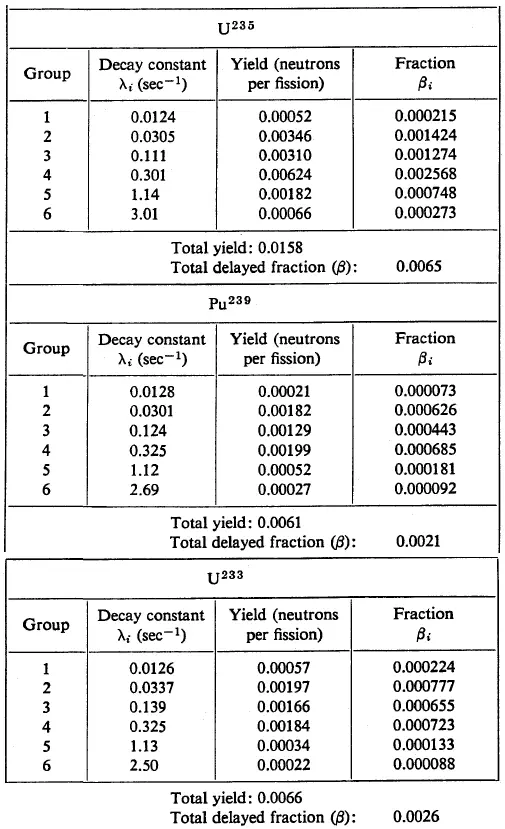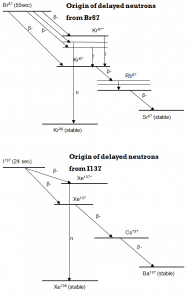Six Groups of Delayed Neutrons – Parameters
Reactor-kinetic calculations considering such many initial conditions would be correct, but they would also be very complicated. Therefore G. R. Keepin and his co-workers suggested grouping together the precursors based on their half-lives.
Therefore delayed neutrons are traditionally represented by six delayed neutron groups, whose yields and decay constants (λ) are obtained from nonlinear least-squares fits experimental measurements. This model has the following disadvantages:
- All constants for each group of precursors are empirical fits to the data.
- They cannot be matched with decay constants of specific precursors.
- These constants are different for each fissionable nuclide.
- These constants also change with the neutron energy spectrum.
Although this six-group parameterization still satisfies the requirements of commercial organizations, higher accuracy of the delayed neutron yields and a better energy resolution in the delayed neutron spectra is desired.
It was recognized that the half-lives in the six-group structure do not accurately reproduce the asymptotic die-away time constants associated with the three longest-lived dominant precursors: 87Br, 137I, and 88Br.
This model may be insufficient especially in case of epithermal reactors, because virtually all delayed neutron activity measurements have been performed for fast or thermal-neutron-induced fission. In case of fast reactors, in which the nuclear fission of six fissionable isotopes of uranium and plutonium is important, the accuracy and energy resolution may play an important role.

